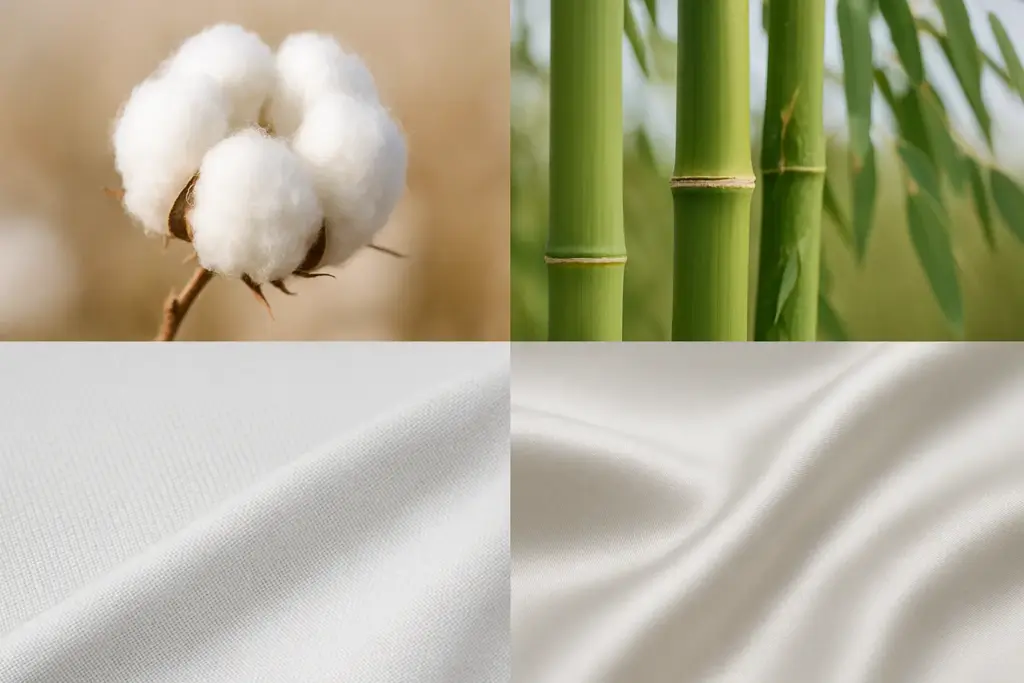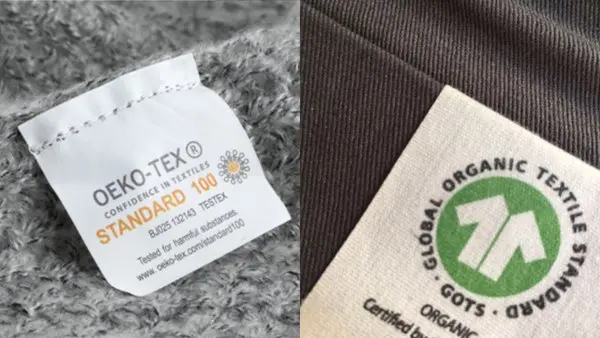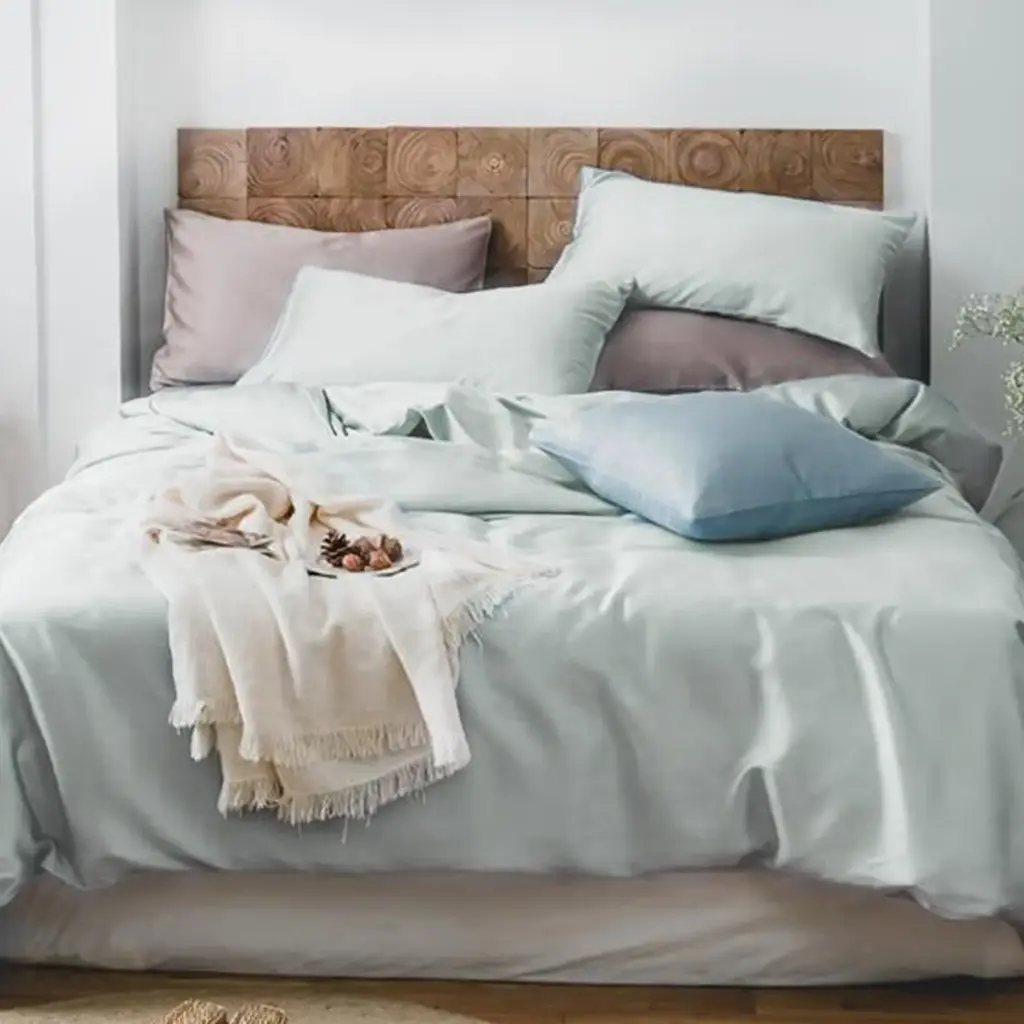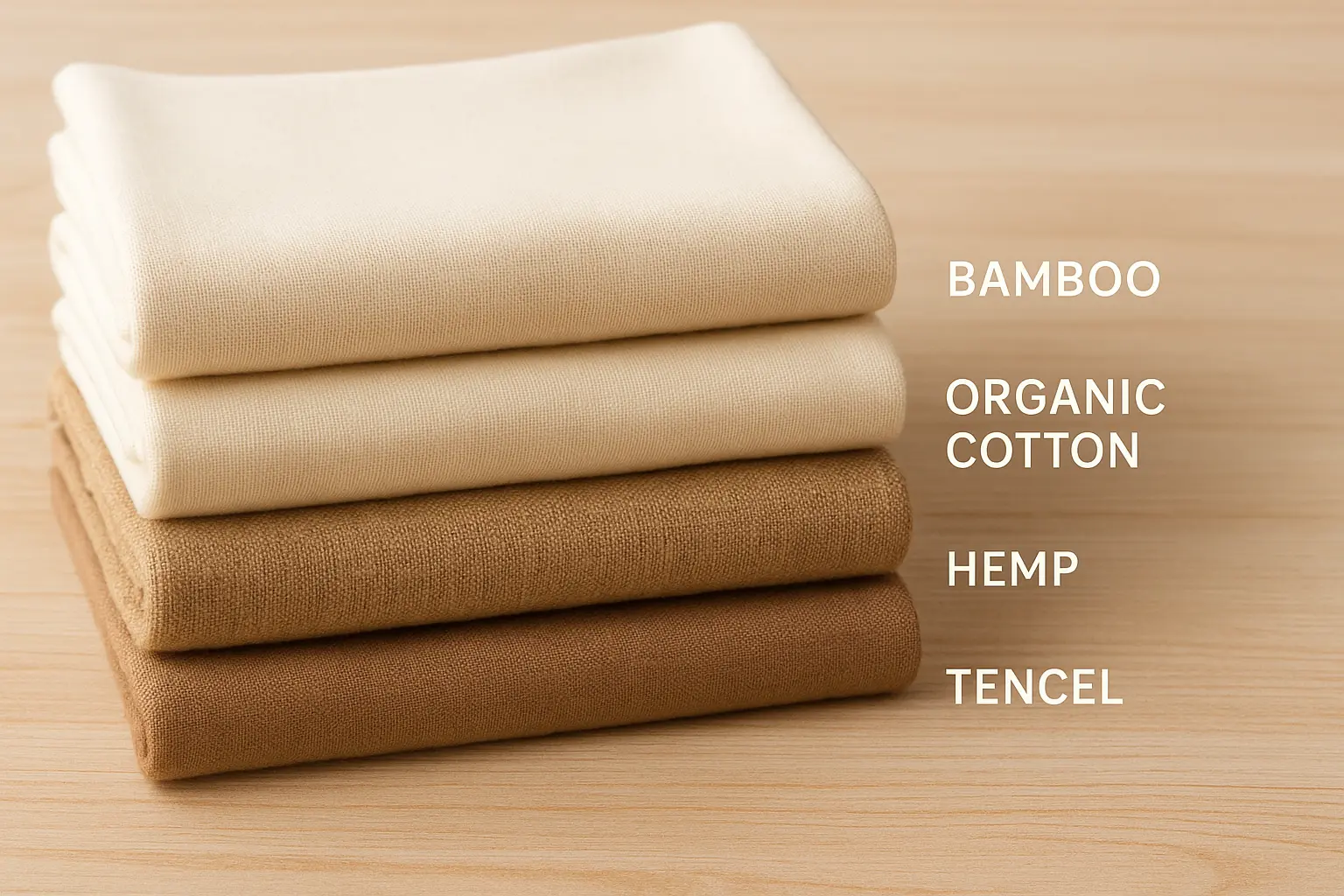The demand for eco-friendly fabric is no longer a trend—it’s a transformation. Across fashion, bedding, and upholstery industries, both consumers and manufacturers are shifting toward materials that minimize environmental impact without compromising quality or comfort.
In this guide, we explore what defines a fabric as “eco-friendly,” the most sustainable options available today, and key factors to consider when choosing materials for your brand or sourcing strategy.
What Is Eco-Friendly Fabric?
Eco-friendly fabrics are textiles that are produced, processed, and disposed of with minimal harm to the environment. These fabrics are characterized by:
- Low water and energy usage
- Reduced chemical input
- Biodegradability or recyclability
- Ethical labor and production practices
- Minimal microplastic shedding (for synthetics)
Sustainable fabric isn’t just about origin—it’s about the entire lifecycle, from fiber to finish.
Top Eco-Friendly Fabrics by Category
▸ Natural & Organic Fibers
| Fabric | Sustainability Benefits |
|---|---|
| Organic Cotton | Grown without synthetic pesticides or GMOs |
| Linen (Flax) | Requires little water, no irrigation, fully biodegradable |
| Hemp | Fast-growing, soil-replenishing, highly durable |
| Ramie | Low input fiber similar to linen; long-lasting |
▸ Regenerated Cellulose Fibers
| Fabric | Sustainability Benefits |
|---|---|
| TENCEL™ Lyocell | Closed-loop production, FSC-certified wood sources |
| Modal | Softer than cotton, made from beech trees |
| Bamboo Lyocell | Requires no pesticides, highly breathable, compostable |

Note: Not all bamboo fabrics are sustainable—look for closed-loop lyocell, not viscose processed with harsh solvents.
▸ Recycled & Innovative Synthetics
| Fabric | Sustainability Benefits |
|---|---|
| rPET (Recycled Polyester) | Diverts plastic from landfills/oceans; lower carbon footprint |
| ECONYL® (Regenerated Nylon) | Made from fishing nets and industrial waste; fully circular |
| Recycled Spandex/Elastane | Maintains stretch with fewer virgin resources |
Certifications That Matter
When sourcing eco-friendly fabric, certifications ensure credibility and transparency. Look for:
- GOTS (Global Organic Textile Standard) – Organic fibers + ethical production
- OEKO-TEX® Standard 100 – Free from harmful substances
- FSC® – Responsible forestry for cellulose-based fabrics
- GRS (Global Recycled Standard) – Recycled content and social compliance
- Bluesign® – Safe chemistry and reduced environmental impact

Environmental Impact Comparison
| Category | Water Use | Energy Use | Biodegradable | Microplastic Risk |
|---|---|---|---|---|
| Organic Cotton | Low | Medium | Yes | No |
| TENCEL™ Lyocell | Very Low | Low | Yes | No |
| Hemp/Linen | Very Low | Low | Yes | No |
| rPET | Very Low | Low | No | Moderate |
| Conventional Polyester | High | High | No | High |
Use Cases Across Industries
- 🛏️ Home Textiles: Bedding, towels, upholstery
- 👕 Apparel: Loungewear, T-shirts, activewear
- 📦 Packaging & Accessories: Reusable bags, drawstring covers
- 🏨 Hospitality: Eco-certified sheets, robes, pillow covers
- 🌍 Sustainability Brands: Core material for circular collections

relation product:Tencel Lyocell Sheets Set
How to Source Eco-Friendly Fabric
When integrating sustainable fabrics into your product line:
- ✅ Request certifications from suppliers
- ✅ Confirm closed-loop or organic production processes
- ✅ Audit traceability across the supply chain
- ✅ Select low-impact dyeing & finishing options
- ✅ Consider end-of-life strategy: recyclable, compostable, or take-back programs
B2B buyers should request sample swatches and lab test reports verifying durability, shrinkage, and breathability.
Conclusion
Choosing eco-friendly fabrics is a strategic step toward a greener, more responsible textile industry. Whether you’re a brand innovating sustainable collections or a buyer sourcing ethical materials, your fabric choices directly impact the planet and consumer trust.
By selecting the right fiber blends, verified by trusted certifications, and aligned with performance goals, you pave the way for conscious design—and competitive advantage.


Leave a Reply